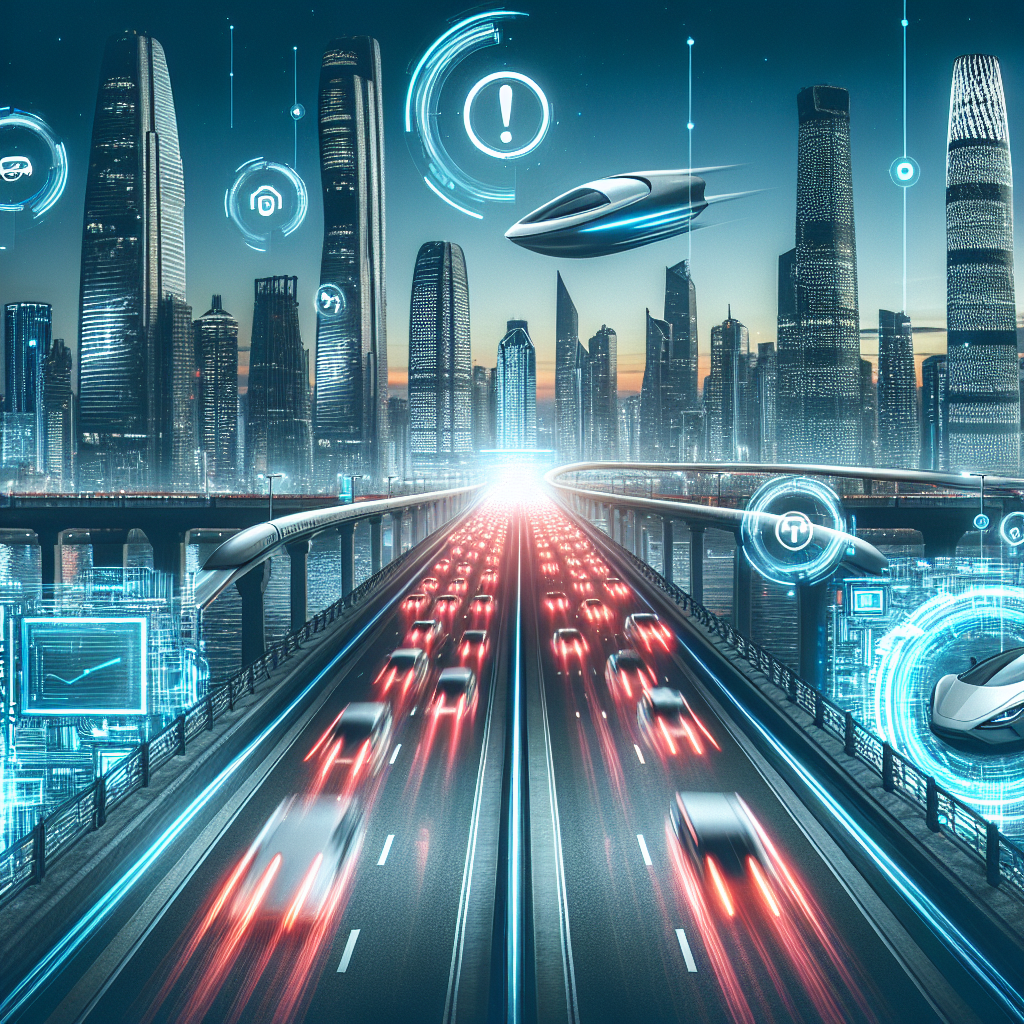AI and the Future of Transportation: How it Poses Risks
Artificial intelligence (AI) has been revolutionizing various industries, and the transportation sector is no exception. With the advancement of AI technology, autonomous vehicles, intelligent traffic management systems, and predictive maintenance solutions are becoming increasingly common. While AI promises to bring many benefits to the transportation industry, it also poses significant risks that need to be addressed.
AI in transportation has the potential to improve safety, efficiency, and sustainability. Autonomous vehicles, for example, can reduce human errors that lead to accidents, improve traffic flow, and lower fuel consumption. Intelligent traffic management systems can optimize traffic signals, reduce congestion, and improve the overall efficiency of transportation networks. Predictive maintenance solutions can help prevent breakdowns and reduce maintenance costs.
Despite these potential benefits, AI in transportation also poses risks that need to be carefully managed. One of the primary concerns is the safety of autonomous vehicles. While AI-powered vehicles have the potential to reduce accidents caused by human errors, they also introduce new risks related to the reliability of AI algorithms and the interactions between autonomous vehicles and other road users. Ensuring the safety of autonomous vehicles requires rigorous testing, validation, and regulation.
Another risk associated with AI in transportation is the potential for job displacement. As autonomous vehicles and AI-powered systems become more prevalent, there is a risk that many jobs in the transportation sector, such as truck drivers, taxi drivers, and delivery drivers, could be automated. This could lead to unemployment and economic disruption in communities that rely heavily on transportation-related jobs.
AI also raises concerns about data privacy and cybersecurity in transportation. As vehicles become more connected and autonomous, they collect and transmit vast amounts of data, including location information, driving behavior, and personal preferences. This data could be vulnerable to hacking, surveillance, or misuse, raising concerns about privacy and security. Ensuring the protection of data and cybersecurity in transportation systems is essential to prevent unauthorized access and ensure the trust of users.
Furthermore, AI in transportation raises ethical concerns related to decision-making. Autonomous vehicles, for example, may face complex ethical dilemmas when making split-second decisions on the road, such as choosing between avoiding a pedestrian or swerving into another lane. These ethical dilemmas raise questions about who is responsible for the decisions made by AI systems, how to program ethical behavior into AI algorithms, and how to ensure transparency and accountability in decision-making processes.
To address these risks, policymakers, regulators, and industry stakeholders need to work together to develop robust frameworks for the responsible deployment of AI in transportation. This includes establishing clear safety standards, ethical guidelines, data privacy regulations, and cybersecurity measures to ensure the safe and ethical use of AI technologies in transportation.
In conclusion, AI has the potential to transform the transportation industry, bringing numerous benefits in terms of safety, efficiency, and sustainability. However, AI also poses significant risks that need to be carefully managed, including safety concerns, job displacement, data privacy, cybersecurity, and ethical dilemmas. By addressing these risks through collaboration, regulation, and responsible deployment, we can harness the full potential of AI in transportation while minimizing its negative impacts.
FAQs
Q: What is AI in transportation?
A: AI in transportation refers to the use of artificial intelligence technologies, such as machine learning, deep learning, and computer vision, to improve safety, efficiency, and sustainability in transportation systems. This includes autonomous vehicles, intelligent traffic management systems, predictive maintenance solutions, and other AI-powered applications in the transportation sector.
Q: How does AI benefit transportation?
A: AI benefits transportation by improving safety, efficiency, and sustainability. Autonomous vehicles can reduce accidents caused by human errors, improve traffic flow, and lower fuel consumption. Intelligent traffic management systems can optimize traffic signals, reduce congestion, and improve the overall efficiency of transportation networks. Predictive maintenance solutions can help prevent breakdowns and reduce maintenance costs.
Q: What are the risks of AI in transportation?
A: The risks of AI in transportation include safety concerns related to the reliability of AI algorithms and the interactions between autonomous vehicles and other road users. Job displacement is also a risk as automation could lead to unemployment in transportation-related jobs. Data privacy and cybersecurity risks arise from the collection and transmission of data by connected vehicles. Ethical concerns include decision-making dilemmas faced by autonomous vehicles on the road.
Q: How can the risks of AI in transportation be addressed?
A: The risks of AI in transportation can be addressed through collaboration, regulation, and responsible deployment. This includes establishing clear safety standards, ethical guidelines, data privacy regulations, and cybersecurity measures to ensure the safe and ethical use of AI technologies in transportation. By working together, policymakers, regulators, and industry stakeholders can mitigate the risks of AI in transportation while maximizing its benefits.

